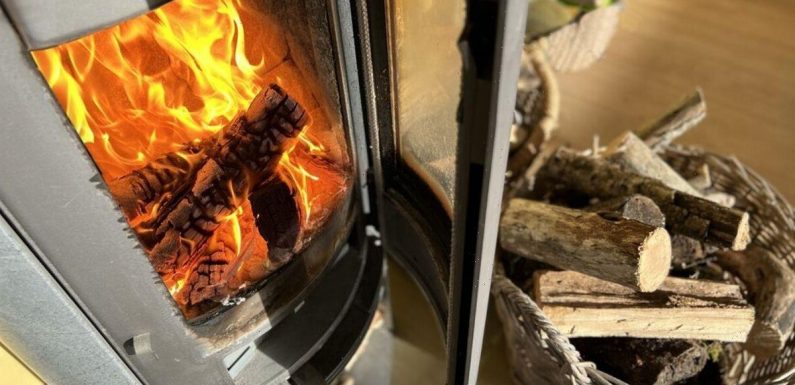
Energy bills: Couple discuss the increase in their prices
We use your sign-up to provide content in ways you’ve consented to and to improve our understanding of you. This may include adverts from us and 3rd parties based on our understanding. You can unsubscribe at any time. More info
With energy bills currently at eye-watering levels, over half a million people use wood-burning stoves to heat their homes this winter. As thousands look to install a log burner in their home, industry experts are reporting fears of a potential shortage. Demand for log burners has shot up by nearly 40 percent, jumping to 35,000 orders between April to June, compared to 25,000 from the same period last year. It comes as Russian President Vladimir Putin’s war in Ukraine and his supply cuts to Europe sent gas prices soaring, which has had a huge knock-on impact on UK billpayers.
With such a high demand for solid fuel heating this winter, many Britons may have missed the recent Government regulation changes surrounding wood-burning stoves.
To avoid the possible health risks, owners of log burners now have to comply with a number of new clean air regulations and appliance exemptions, which can often be confusing.
Wood burners have faced increased scrutiny over the past few years, after being linked to nearly 50 percent of people’s exposure to cancer-causing chemicals found in air pollution particles in urban areas.
In 2022, the Government issues new laws which mean that the type of log burner you can buy and the fuel you put in it matters if you are to avoid burning cash by paying a hefty fine.


To navigate these confusing rules, LeicestershireLive has detailed all the new Government regulations on wood-burning stoves, from a ban on old stoves to fuel restrictions.
Are wood-burning stoves being phased out?
The new wood-burning stove laws came into force in an effort to curb the nation’s emissions, with the appliances accounting for 38 percent of particulate matter air pollution, a Government report says.
But the buying and installation of new wood-burning stoves is not banned, as many had feared, but there is a production ban on older-style stoves.
According to the HomeOwners Alliance, wood-burning stoves and multi-fuel stoves and fireplaces now manufactured have to meet strict new guidelines known as Ecodesign. The Ecodesign mark means the stove has been tested by an approved laboratory, meeting all requirements on air quality and particulates.


What you can use as fuel
Sales of bagged house coal and wet wood in units under two cubic meters are illegal. Government regulations state: “Burning at home, particularly with traditional house coal or wet wood, is a major source of the pollutant PM2.5 – which has been identified by the World Health Organisation as the most serious air pollutant for human health.”
Wood that is sold for the purpose of burning in stoves needs to be RTG (Ready To Burn), meaning it has been tested and has a moisture content under 20 percent. DEFRA appointed HETAS and Woodsure to run the RTB fuel certification scheme in order to achieve cleaner burning of wood.
Smoke control areas
If you are in one of the nation’s smoke control areas, you can view a map here, you must only burn fuel on the list of authorised fuels, or any of the following ‘smokeless’ alternatives unless you’re using an exempt appliance:
- anthracite
- semi-anthracite
- gas
- low volatile steam coal
DON’T MISS:
Botched Virgin Orbit launch went ahead despite staff warnings [REVEAL]
Electric vehicle boost as major new UK battery site announced [INSIGHT]
Britishvolt collapse ‘not surprising’ but deeply concerning [ANALYSIS]

The Government says: “In England you may have to pay a penalty of up to £300 if your local council decides your chimney releases too much smoke. You can be fined up to £1,000 if you burn unauthorised fuel without an exempt appliance.”
While many families are opting for wood-burning stoves to alleviate surging energy costs, the war in Ukraine has also forced wood prices to jump. One supplier said that a crate of wood cost £210 in August but reached £240 in September, only for it to later jump to £270 further down the line.
But with energy bills costing double the amount they were last year, and with the price cap now set to reach £3,000 when the energy price guarantee goes up in April, log burners may still be able to save you some cash in the long term.
With demand soaring, households seem more willing to pay one lump sum upfront rather instead of forking out more for their energy bills over time. According to the Energy Saving Trust, log burners can cut a home’s heating bill by up to 10 percent once installed.
Source: Read Full Article